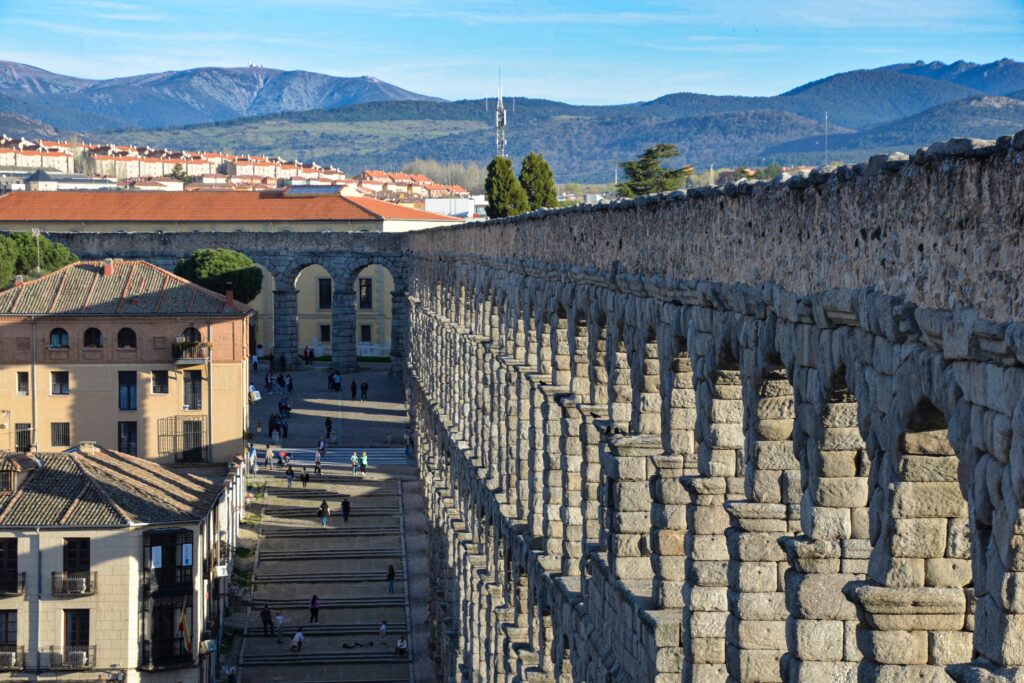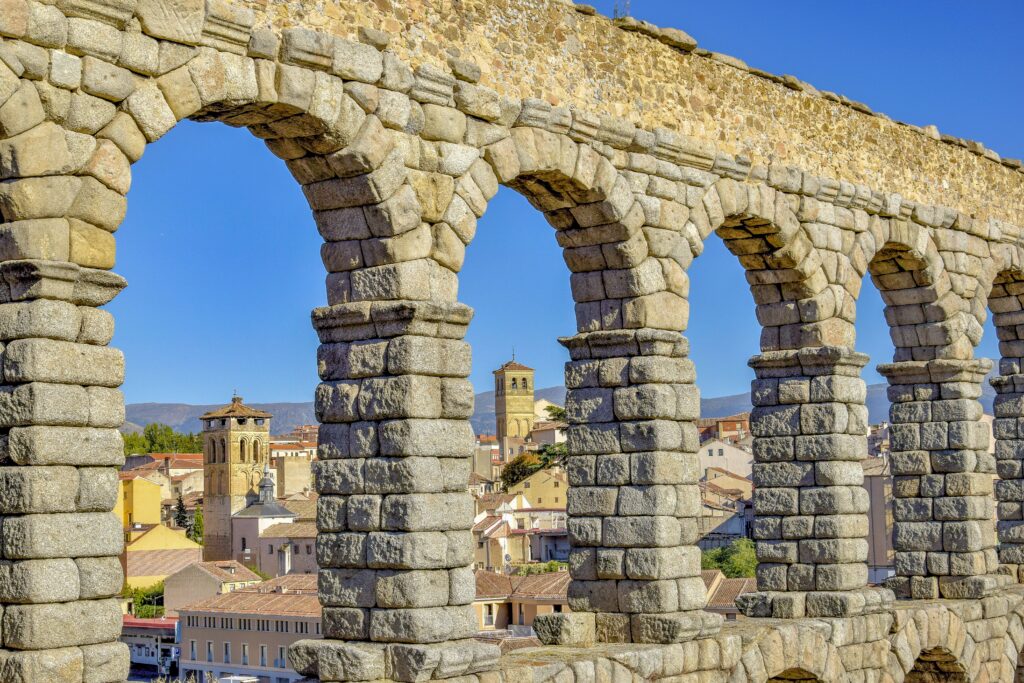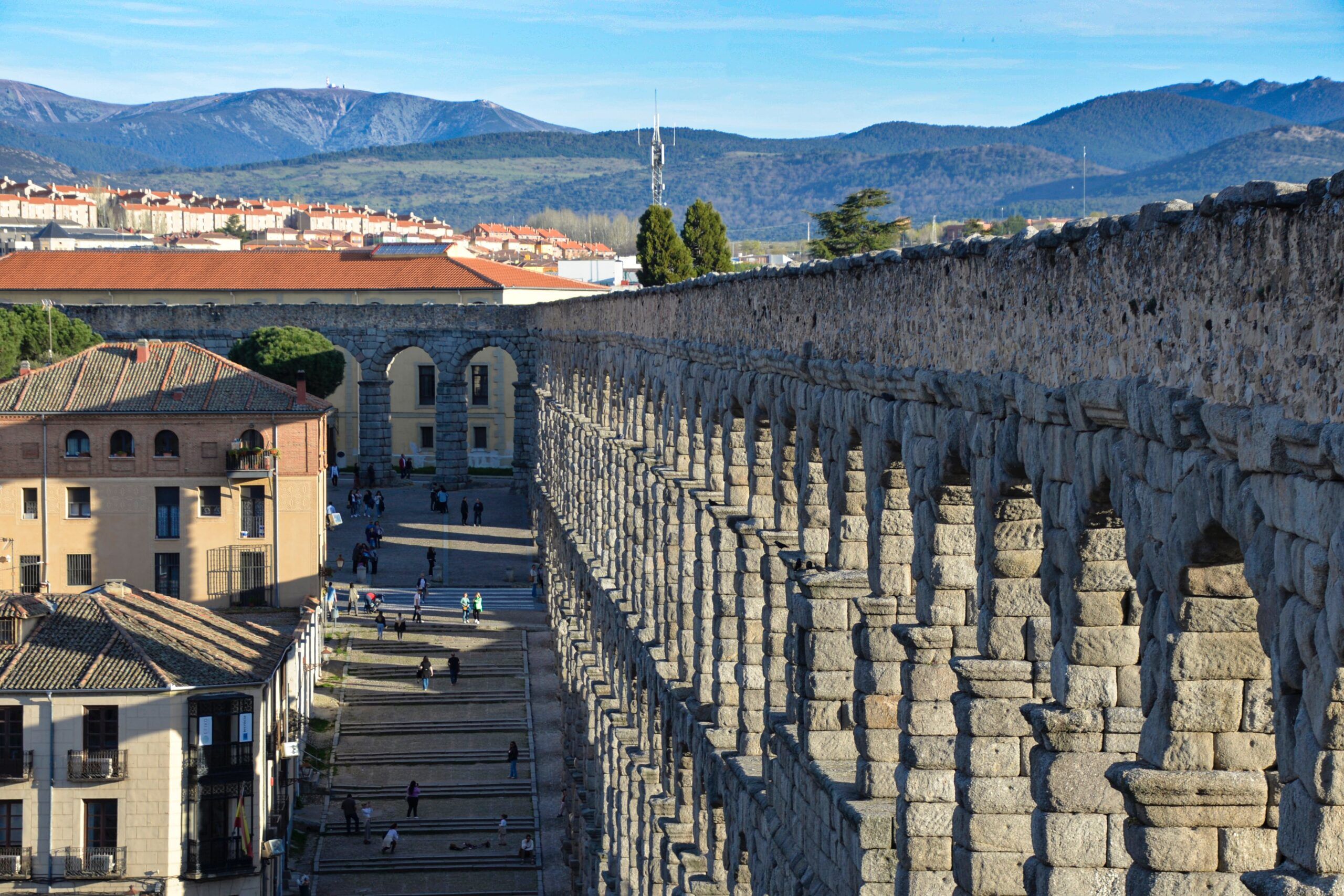Aqueduct of Segovia
Categories/ tags: Utilization of Water and Wind Power; Aquedutos for Water Management.
Historical context: The Aqueduct of Segovia, an ancient Roman engineering marvel located in the city of Segovia, Spain, stands as a testament to the importance of water management and the preservation of this precious resource. Built in the I century AD during the reign of Emperor Trajan, this aqueduct played a vital role in sustaining the growing population of Segovia. It provided a reliable water supply for daily needs, agriculture, and public baths, showcasing the Romans’ understanding of the critical link between water management and urban development.

Vicente Jesús Diaz. (n.d). Aqueduct of Segovia. https://www.pexels.com/photo/aqueduct-in-segovia-16760743/
Form – main architectural features: The aqueduct’s design and construction highlight the Romans’ commitment to efficient water transportation. The arches, meticulously crafted from granite blocks, span over 16 kilometers, channeling water from the Fuenfría Springs to Segovia. This precise engineering ensured a steady flow of water, minimizing wastage and maximizing its utility. The aqueduct stands as a testament to the ingenuity of Roman engineers in overcoming geographical challenges for the benefit of their communities.
Function: The Aqueduct of Segovia serves as a beacon of sustainable water practices. Its construction aimed to minimize water loss and ensure efficient distribution without the need for energy-intensive pumping systems. The reliance on gravity as a means of water transportation reflects a keen understanding of environmental impact, emphasizing the importance of sustainability in water management. This ancient marvel continues to inspire responsible water practices in the modern era.

Emilio Sánchez (n.d.). Aqueduct of Segovia. https://www.pexels.com/photo/roman-aqueduct-of-segovia-15583525/
Lessons for sustainability: Beyond its historical and architectural value, the Aqueduct of Segovia holds significance in climate preservation. As water scarcity and climate change pose global challenges, the aqueduct serves as a historical model for responsible water usage. Its efficient design and sustainable practices underscore the critical role water management plays in mitigating the impact of climate change. The aqueduct encourages us to reflect on the environmental consequences of water usage and inspires a commitment to preserving this vital resource for future generations.
The Aqueduct of Segovia offers valuable lessons for modern water management. Its emphasis on efficiency, sustainability, and responsible usage provides a blueprint for addressing contemporary water challenges. Investing in infrastructure to minimize water loss, implementing conservation measures, and promoting awareness are key takeaways. By drawing inspiration from ancient engineering wisdom, we can contribute to a more sustainable future for our planet.
Cultural heritage and tourism: Recognized as a UNESCO World Heritage Site, the Aqueduct of Segovia is a testament to human ingenuity and a major tourist attraction. Its preservation contributes to the local economy and raises awareness about water management and climate preservation. The aqueduct’s cultural significance, coupled with its architectural grandeur, offers a tangible link to our past. It stands as a reminder that responsible stewardship of natural resources is essential for maintaining a delicate balance between human development and environmental sustainability.
The Aqueduct of Segovia invites us to appreciate the profound impact of ancient engineering on shaping our understanding of water management and its crucial role in combating climate change.
Location: Pl. Azoguejo, 1, 40001 Segovia – Spain
Aqueduct of Segovia – Spain

Sources
World Monuments Fund (2009). Aqueduct of Segovia. Retrieved January 14, 2024, from https://www.wmf.org/project/aqueduct-segovia
Warren, K. (2024). Worldwide Writer. The Roman Aqueduct Of Segovia: Bringing Water To The City. Retrieved January 14, 2024, from https://www.worldwidewriter.co.uk/exploring-roman-aqueduct-of-segovia.html